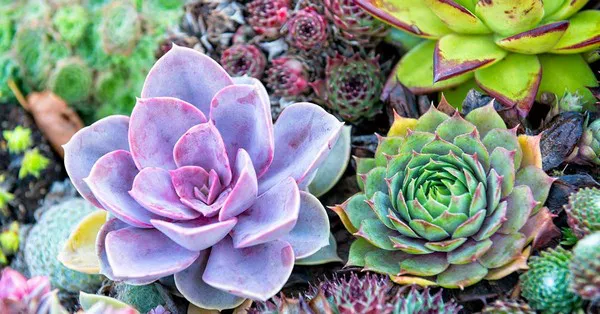Gardening enthusiasts and plant lovers are constantly seeking innovative ways to display their green companions. One charming trend that has gained popularity in recent years is planting succulents in teacups. This creative and aesthetically pleasing approach combines the elegance of vintage teacups with the natural beauty of succulent plants. In this article, we will explore the step-by-step process of planting succulents in teacups, the best succulent varieties for this project, and essential care tips to ensure your teacup succulents thrive.
Choosing the Right Teacup and Succulents
1. Selecting Teacups
When choosing teacups for your succulent planting project, opt for those with drainage holes or the capacity to drill holes. Drainage is crucial for preventing overwatering and root rot. If your chosen teacups lack drainage holes, consider drilling them at the bottom to ensure proper water management. Vintage, ornate, or colorful teacups can add a unique touch to your indoor garden.
2. Picking the Perfect Succulents
Not all succulents are suitable for teacup planting. Opt for varieties that have slower growth rates and naturally compact sizes. This ensures that the succulents won’t outgrow the teacup too quickly and will maintain a visually appealing appearance. Some excellent choices include Echeverias, Haworthias, and Sedum varieties. Before planting, research the specific care requirements of the succulents you’ve chosen to ensure they thrive in your chosen teacups.
Step-by-Step Planting Guide
1. Gathering Materials
Before you begin planting, gather all the necessary materials:
- Teacups with drainage holes or the means to create them
- Succulent plants of your choice
- Well-draining potting mix suitable for succulents
- Small stones or gravel for additional drainage
- Optional: activated charcoal to prevent odors and fungal growth
- Decorative elements like tiny figurines or pebbles
2. Planting Process
Follow these steps to successfully plant your succulents in teacups:
Prepare the Teacups: If your teacups lack drainage holes, carefully drill holes in the bottom. Layer the bottom with small stones or gravel to ensure proper drainage, preventing water from pooling at the roots.
Add Potting Mix: Fill the teacup about two-thirds full with the well-draining succulent potting mix. Leave enough space at the top for your succulents.
Plant the Succulents: Gently remove the succulents from their nursery pots and shake off excess soil. Create small holes in the potting mix with your finger and place the succulents into the holes. Press the soil gently around the plants to hold them in place.
Finishing Touches: Add a thin layer of decorative pebbles or small stones on top of the potting mix. Not only does this enhance the aesthetics, but it also helps prevent moisture loss.
Optional Decor: If you want to add a personal touch, consider placing tiny figurines or decorative elements on top of the soil. Just ensure that these decorations don’t interfere with the growth of your succulents.
Allow for Settling: After planting, allow your teacup succulents to settle for a day or two before watering. This helps prevent any disturbances to the plants’ root systems.
Caring for Your Teacup Succulents
1. Light and Location
Succulents thrive in bright, indirect sunlight. Place your teacup succulents near a window that receives several hours of filtered sunlight each day. Avoid placing them in direct sunlight, as this can cause sunburn and scorching.
2. Watering
Proper watering is essential for the health of your teacup succulents. Water the plants thoroughly, allowing excess water to drain from the bottom. Always check the moisture level of the soil before watering again. Insert your finger into the soil up to the first knuckle – if it feels dry, it’s time to water. Remember that succulents prefer to be slightly underwatered than overwatered.
3. Temperature and Humidity
Most succulents prefer temperatures between 60-75°F (15-24°C). These plants are adapted to arid environments and don’t require high humidity levels. Ensure proper air circulation to prevent mold growth, especially in humid conditions.
4. Fertilization
Feed your teacup succulents with a balanced, diluted succulent fertilizer during the growing season (spring and summer). Follow the manufacturer’s instructions for proper dilution and frequency.
5. Pruning and Maintenance
As your succulents grow, you might need to trim back leggy or dead growth to maintain their compact and attractive appearance. Use clean, sharp scissors or pruning shears for this purpose.
6. Repotting
Teacup succulents will eventually outgrow their containers. When this happens, gently remove the succulents from the teacup, carefully untangle any roots, and replant them in slightly larger containers. Refresh the potting mix during repotting.
Conclusion
Planting succulents in teacups offers a delightful way to bring greenery and elegance into your living spaces. This creative gardening project allows you to showcase your favorite succulents while adding a touch of vintage charm to your décor. By selecting the right teacups, appropriate succulent varieties, and following the planting and care guidelines outlined in this article, you can create stunning teacup succulent arrangements that thrive and bring joy to your surroundings. Remember, the key to success lies in finding the balance between aesthetic appeal and the well-being of your plants through proper care and attention.


